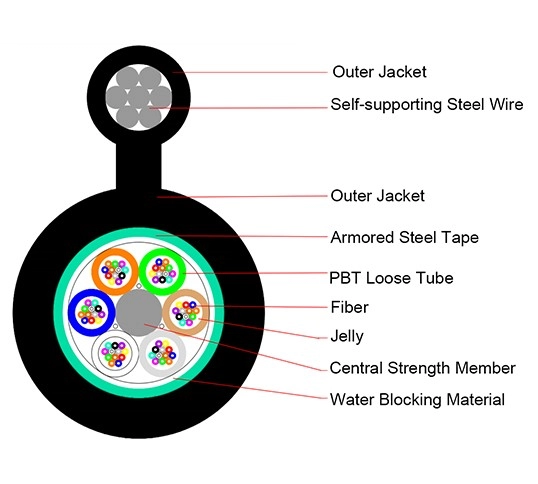
Blog
blog Location: Home > Blog > Technical Article
Location: Home > Blog > Technical Article
 Update Time:2025-08-15
Update Time:2025-08-15 Traffic:
Traffic: 
Optical fiber, this seemingly simple slender fiber, actually contains complex technical principles and extensive application value. This article will take you to understand the basic structure of optical fiber, the principle of light propagation in it, and its practical applications in various fields.
Fiber optics are made up of three main parts: a core, a cladding and a coating. The core is the core of an optical fiber and is responsible for transmitting light signals. It is usually made of high-purity silicon dioxide, sometimes doped with other materials to adjust its refractive index. The cladding wraps around the core and has a lower refractive index than the core. This difference is key to light's ability to travel through the fiber. The outermost coating layer protects the fiber from mechanical damage and environmental erosion.
The propagation of light in an optical fiber relies on the principle of total reflection. When light rays are directed from the core with a higher refractive index to the cladding with a lower refractive index, if the incident angle reaches a critical angle, the light will be reflected back to the core in its entirety, rather than refracted into the cladding. This phenomenon of total reflection allows light to continuously reflect along the core in the fiber, forming an efficient "light pipe". The size of the critical angle depends on the difference in refractive index between the core and the cladding. Since there is almost no light leakage inside the fiber, the optical signal can maintain a low energy loss during long-distance transmission. Modern fiber optic technology has been able to achieve extremely low attenuation, allowing the stable transmission of optical signals over distances of thousands of kilometers. In addition, through wavelength division multiplexing (WDM) technology, optical signals of different wavelengths can propagate independently in the same fiber, greatly enhancing the transmission capacity of the fiber.
The application range of optical fiber is very wide. In the field of communication, optical fiber is the foundation of modern communication networks, providing high-speed and large-capacity transmission channels for services such as Internet, telephone and TV. Its bandwidth far exceeds that of traditional copper cables, which can meet high-resolution video streaming, large-scale data download and other high-speed data transmission needs. In the medical field, optical fiber endoscopes use optical fibers to transmit light to the inside of the human body. Doctors can check and diagnose by observing the images returned by optical fibers. It has the advantages of less trauma and clear field of vision. In the industrial field, optical fiber sensors are widely used in the measurement and monitoring of physical quantities such as temperature, pressure and strain. They have the advantages of anti-electromagnetic interference, high sensitivity and small size. They can work reliably in harsh environments. In addition, in the military field, optical fibers are used to build safe and reliable communication networks and special military equipment, ensuring the safe transmission and accurate control of military information.
Through the above introduction, we can see that optical fiber not only has unique advantages in technology, but also plays an irreplaceable role in many fields. With the continuous advancement of technology, the application prospect of optical fiber will be broader.
